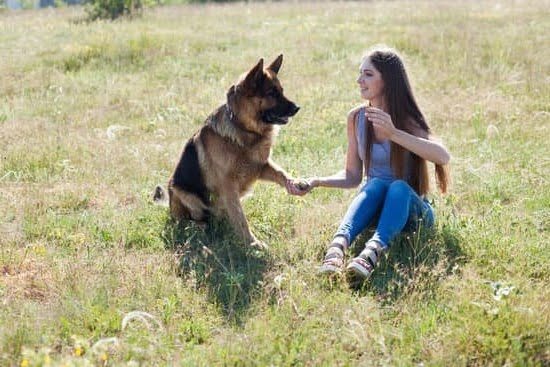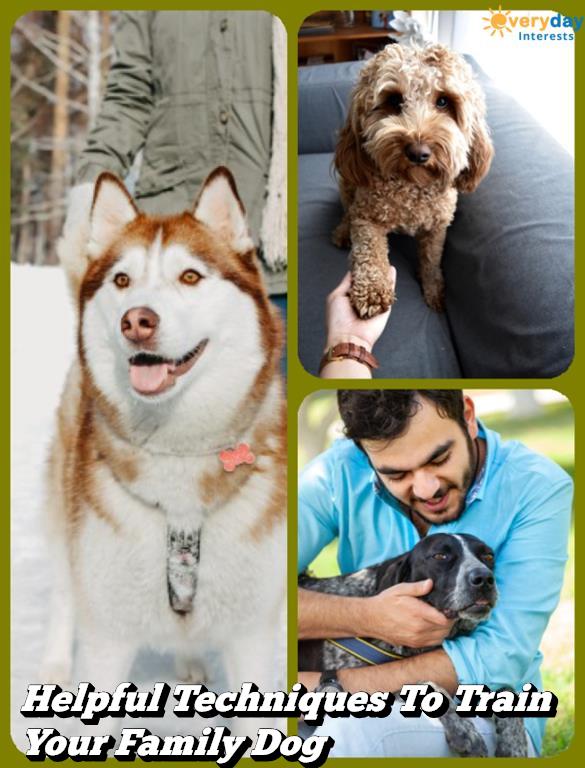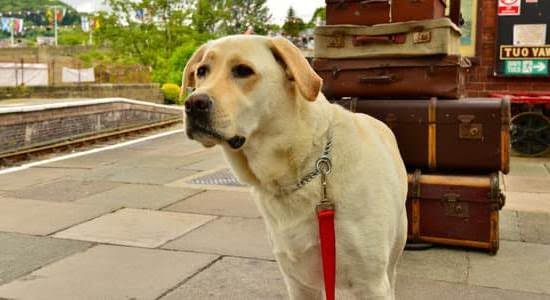Introduction
Training a protection dog for your family can be an exciting, yet daunting task. It requires patience, commitment, and consistency. However, before beginning the process of training it is necessary to understand that protection dogs are not just ordinary house pets. They require intense and unique training in order to become fully prepared as a protector and guardian. The right breed of dog plays an essential role in what type of protection they provide and how they interact with their family. Additionally, there are specific training techniques that must be utilized in order to truly prepare your pup for its ultimate role as defender. Having the correct mindset and understanding is one of the most important factors when it comes to raising an effective protection dog for your family. With passion and dedication, you will soon produce a loyal companion that can offer real protection benefits for your home and family members.
Assessing Your Home
Before you begin to train a protection dog for your family, it is essential to assess your home and evaluate the potential risks that a dog may encounter. Start by making a list of potential intruders who may enter your property. This can include people or animals that could pose a threat, as well as any unfamiliar objects or situations. Additionally, look into what kind of alarm system and security measures are already in place. From this assessment, you should be able to identify which areas of your home will require additional protection, what types of commands would be beneficial to teach your pooch, and how often the dog must be trained in order to respond correctly in a threatening situation. This analysis will also help you determine whether specific breeds or individual traits make them better suited for protection purposes versus other goals. Finally, consider any behavioral issues that need to be addressed prior to officially beginning the training process. With careful consideration of these factors, you should have an understanding of the training needs that your pooch requires before bringing him/her home to live with your family as its guardian!
Preparing a Trainig Plan
Before you begin to train your protection dog, it’s important to create a plan that will give the animal proper instruction in methods to protect your family. Some of the key steps you’ll need to take include determining how aggressive and reactive you want the dog to be, investing in the right equipment and supplies, establishing a strong bond between your family members, teaching verbal commands and body language cues, as well as introducing proper discipline techniques that are consistent with your needs.
Now that you have an idea of what needs to be done to properly train your protection dog for your family, it’s time to identify each step and implement them correctly. When it comes to identifying aggression levels, think about how comfortable you are with allowing the dog maximum security when needed but also holding back when necessary. Decide on which supplies such as leashes or training collars work best for your pup and budget. Establish trust between both humans and canines by creating positive experiences through exercises like obedience commands and making sure everyone in the family interacts with the pup appropriately. Next, teach vocal cues such as “stay” or “down” for standing orders or single time commands like “heel” or “come”. Body language is also an important cue; from lines drawn in front on no entry-zones according resource guarding behavior warnings signs such as lip lifting ,stiffening tail etc . Finally choose a discipline style matching your own approval system; assertive but not coercion is beneficial for clear communication between owner and pet. Keep session short with breaks if needed. These steps may seem daunting at first but don’t worry! With some dedication, patience and practice you will soon have a dependable protector keeping your loved ones safe all around!
Understanding Behaviour
When training a protection dog for your family, it is essential to understand the behaviour of your pup. Before you begin any form of training, you should observe your pup’s conduct and look for signs of fear and aggression. Fear-based behaviours manifest in various forms such as cowardice or anxious behaviour, bark/growling, cowering or hiding, trembling or tenseness in their body language, freezing up when they are scared, avoidance or discomfort around certain people or objects, and aggressive reactions such as biting or snapping. Aggressive behavior can be identified by intense growling that increases in volume, baring teeth to show dominance, lunging at perceived threats in an attempt to scare them away, and excessive barking that indicates a sense of territoriality. Recognizing these warning signs will help you better understand your pup’s wellbeing and assess how they are responding to different stimuli. Additionally, properly recognizing fear and aggression will allow you to use positive reinforcement techniques in an effective manner during training sessions. This includes rewarding desired behaviors with treats and verbal praise while providing corrective feedback when showing signs of aggression.
Establishing Rules
To properly train a protection dog for your family, it is essential to establish rules. Creating rules and expectations will help the protection dog understand what you expect of them and learn how to respond accordingly. You should clearly explain all the do’s and don’ts to your dog by providing consistent positive reinforcement with rewards. Establishing boundaries is also necessary when training your dog. For example, if you do not want your protection dog jumping on people or furniture in the house then make sure to consistently remind them during their training session as well as giving them a firm verbal correction if they attempt to do so in real life. Try using consistent hand gestures (for example, putting up a hand palm out) to signify that an action is off limits when teaching your protection dog how to obey basic commands like sit and stay so that even if there are moments of distraction the hand gesture acts as a deterrent for bad behavior. Additionally, setting clear precedence around what is acceptable behavior when guests enter the home or certain areas of the house should help solidify respect and adherence to these boundaries.
Socialization
Socializing a protection dog is an essential part of their training and should begin as soon as possible. This means exposing your pup to different environments, people and other animals. Take them for regular walks so they’re accustomed to public places like parks and bustling streets. Introduce them to new people regularly and spend time around gentle dogs who can act as examples. Before bringing them into any new place, evaluate the potential risk it poses to ensure they don’t become overwhelmed or aggressive. Work with positive reinforcements such as treats, toy rewards and verbal praise to build trust between you and your pup. Teach them basic commands such as sit, stay, come here on a consistent basis so they are conditioned to respond quickly in any situation. As they progress in their training, introduce more difficult exercises that simulate potentially threatening scenarios where your pet must remain calm and obedient despite external pressures.
Preventative Measures
One of the most important steps when training a protection dog for your family is to invest in preventative measures. This means taking a few extra steps to minimize any situation that would require the dog’s protection. Although training the dog is obviously a key aspect, it’s often more effective to focus on eliminating or avoiding any dangerous or threatening situations in the first place. Ensure all external doors and windows are securely locked, install surveillance cameras and alarm systems around the home, post “No Trespassing” signs, and have regular perimeter checks around your property. Additionally, be aware of visitors on your property who may not have the best intentions. Make sure that when visitors come to your house they report to you first before going anywhere else on the grounds—this will give you time to assess whether they pose any potential threat.
Care and Bonding
Training your protection dog requires a strong relationship of trust and respect between you and your pet. Bonding with your protection dog is one of the most important parts of the training process. Establishing a relationship like this takes time and patience, but it’s well worth it in the end. Spend time interacting with your pooch, such as going on walks or playing fetch. You can even give them an interactive canine toy to keep them entertained. Giving regular praise and affection can further strengthen your connection. Generally, the first thing you should teach is basic obedience commands like “sit”, “stay”, and “heel” so that they qualify for any protective roles they may take on later in life. From there, you can begin to formally train your pup how to protect by setting off alarms or buzzers when someone approaches the property, teaching them how to bark when agitated, and providing rewards when they obey commands that relate to guarding behavior. In order for your pup to be an effective protector for years to come, keep up their training by regularly conducting drills every few weeks or having them attend private lessons or group socialization classes if possible. Investing in preventive health care (such as annual vet visits) can also ensure that they remain healthy enough for physical tasks over time. Overall, preparing you and your pup for protection is much more than just teaching them certain skills- it involves tending to both psychological and physical needs depending on each pet’s individual abilities so that responsible security doesn’t ever become an issue down the line.
Summary and Conclusion
Training a protection dog for your family is a rewarding experience. With patience, consistency and appropriate rewards, you can create a loyal companion that provides safety and security to your family. The most important part of this process is creating a positive relationship between the dog and handler and building proper obedience fundamentals. Handling exercises that stress boundaries and expectations when working around people help the pup understand his role as protector, while advanced protection work builds the dog’s confidence to intervene in dangerous situations. By continuing to build on these basics with regular practice sessions, you can have an obedient K9 that serves as a reliable guardian for your family. With all forms of training, be sure to proceed cautiously and never push beyond what the pup is capable of or compromise their welfare. If done correctly, it can be a life-long bond which will provide your family peace of mind knowing they have a dependable protector by their side at all times.

Welcome to the blog! I am a professional dog trainer and have been working with dogs for many years. In this blog, I will be discussing various topics related to dog training, including tips, tricks, and advice. I hope you find this information helpful and informative. Thanks for reading!





